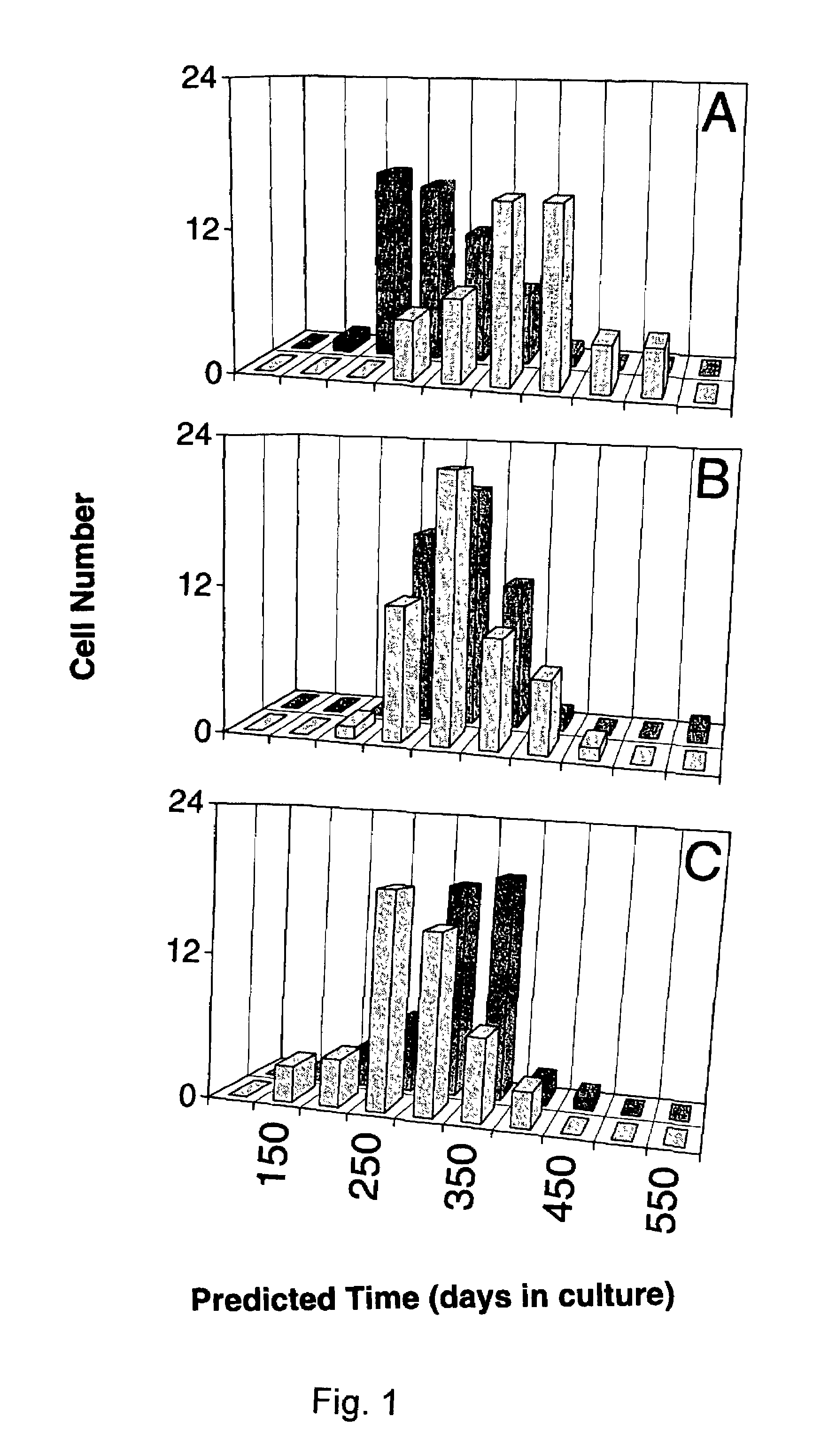Method of assaying shape and structural features in cells
a cell and structure technology, applied in image data processing, instruments, image enhancement, etc., can solve the problems of small variations in contrast introduced by cell structure, unpredictable places where such artifacts contribute to image intensity, and phase microscopy has drawbacks
- Summary
- Abstract
- Description
- Claims
- Application Information
AI Technical Summary
Benefits of technology
Problems solved by technology
Method used
Image
Examples
example i
[0137]Cell lines and interference preparations. Equations were developed to define changes in the signature-type for two epithelial cell lines that underwent transformation over a prolonged time of in vivo culture. Although a different equation was developed in each case, there was considerable overlap in the factors employed as variables (3). IAR20 PC1 was a clonal derivative of a line called IAR20, which was cultured from liver cells of a BD-VI rat. The other line, 1000 W, was generated from the tracheal epithelium of a Fisher 344 rat after topical treatment with 7,12-dimethylbenz(a)anthracene. The lines become tumorigenic after 11 and 16 months of being maintained in culture, respectively (3). Liver cells were grown in William's E medium supplemented with 10% fetal bovine serum, whereas the tracheal cells were grown in Waymouth's medium containing fetal bovine serum plus 0.1 μg / ml insulin and 0.1 μg / ml hydrocortisone. The cells were maintained and subcultured as described elsewh...
example ii
[0161]The mechanism of action of the tumor promoter depends on its ability to substitute for an endogenous second messenger, diacylglycerol, and thereby activate certain members of an enzyme family known as protein kinase C. The quantitative shape phenotype of cells treated with PMA resembled the phenotype of bona fide cancer cells. The effect of PMA on this phenotype was transient as explained above. When the shape phenotype was dissected into components by relating different variable's values to shape features, several of the altered values appeared to rely upon a declining number of sharp features, such as filopodia and microspikes, at the cell edge.
[0162]Filopodia and microspikes are in turn regulated by a GTPase (79, 80) of the Rho family, Cdc42, which modulates actin architecture. Although data suggest that PMA counteracts the rearrangement of actin into filopodia and microspikes, there is no known link of Cdc42 to any PMA-responsive isozyme of protein kinase C. Further, over ...
example iii
[0168]A flowchart showing the preferred method of image processing and segmentation is provided (FIG. 10). The extraction of latent factors from shape data is done in such a way that the new variables are qualitatively related to features which can be perceived by viewing the cells. The use of a large database of values for shape variables, as done herein, is desirable if factors are to be generated which approach this ideal. The definitions and names of highly correlated shape variables that contributed to a data set of exemplary factors are provided below. Here, the first 13 out of 20 factors could be given intuitive descriptions based on the variables they incorporated. Although certain factors beyond the 13th factor could also be given descriptive names, they became increasingly more contour-specific and more specific to a single kind of shape feature. Such intuitive factors can be used in interpreting alterations in cell shape characteristics that may be caused by exposing cell...
PUM
 Login to View More
Login to View More Abstract
Description
Claims
Application Information
 Login to View More
Login to View More - R&D
- Intellectual Property
- Life Sciences
- Materials
- Tech Scout
- Unparalleled Data Quality
- Higher Quality Content
- 60% Fewer Hallucinations
Browse by: Latest US Patents, China's latest patents, Technical Efficacy Thesaurus, Application Domain, Technology Topic, Popular Technical Reports.
© 2025 PatSnap. All rights reserved.Legal|Privacy policy|Modern Slavery Act Transparency Statement|Sitemap|About US| Contact US: help@patsnap.com



